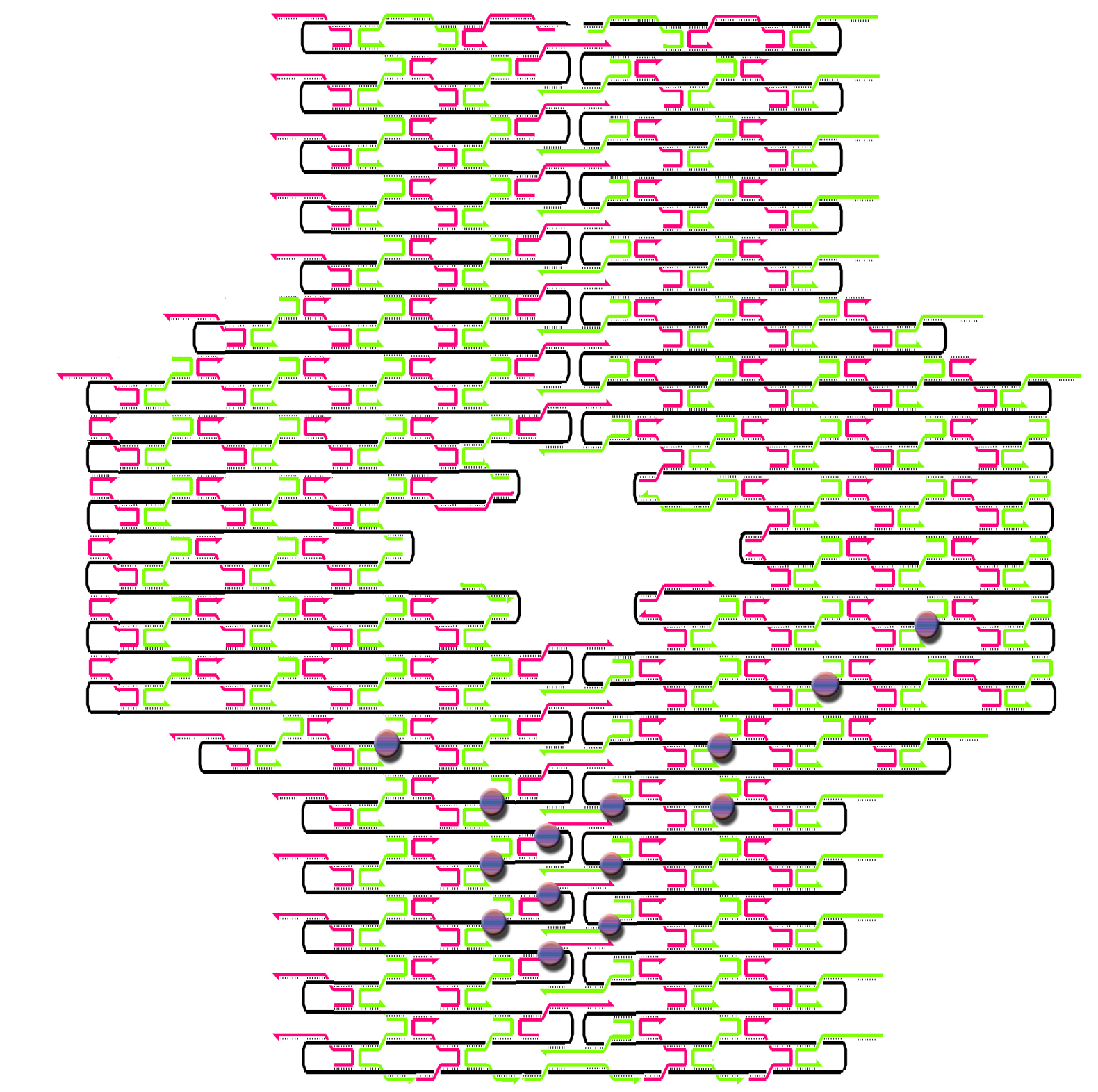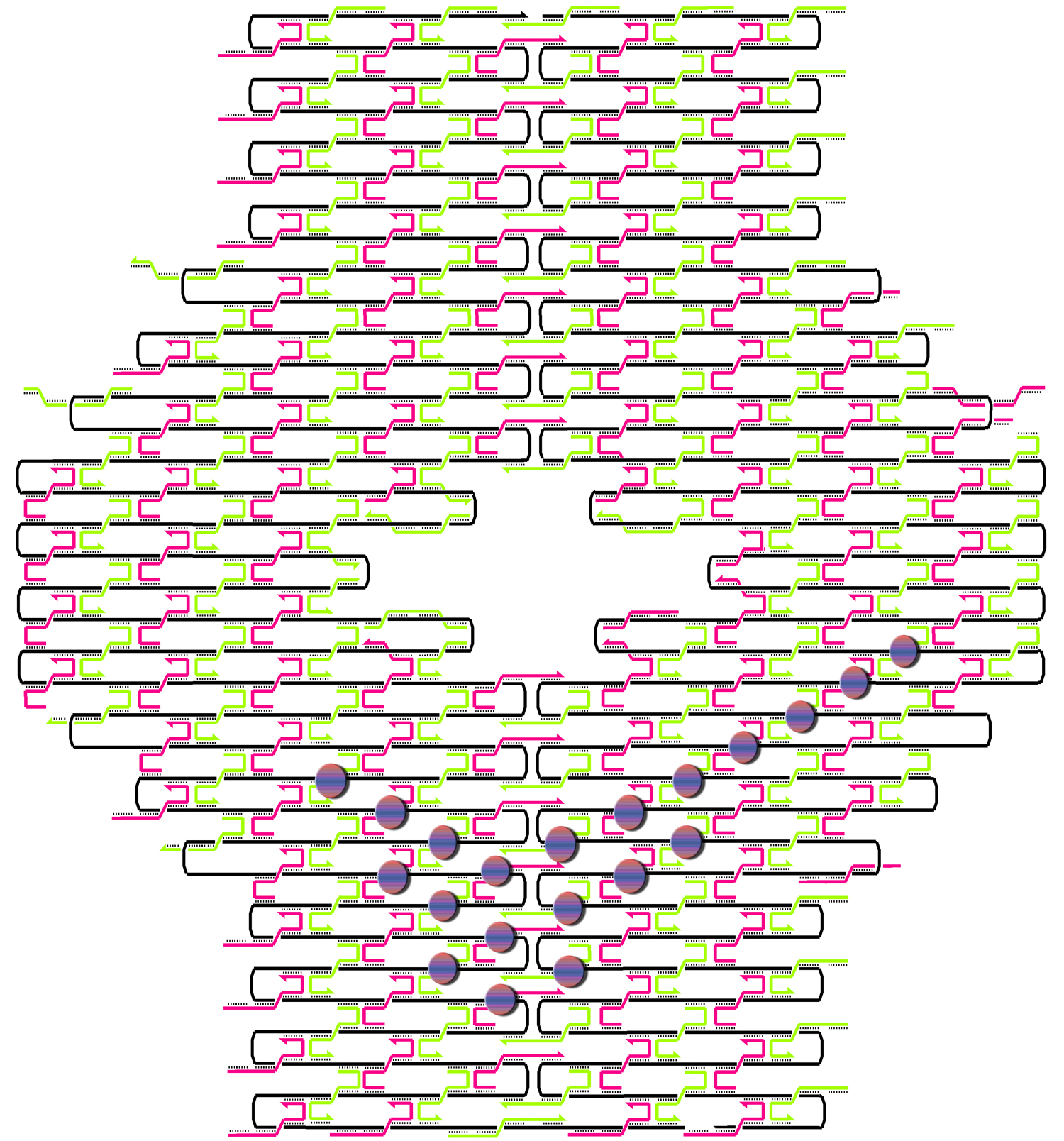User:Irina Petrova
From 2006.igem.org
| Line 13: | Line 13: | ||
The idea was to knit a nice blouse for Barbie without any boundary conditions. I used two methods of knitting: <br> | The idea was to knit a nice blouse for Barbie without any boundary conditions. I used two methods of knitting: <br> | ||
| - | 1) | + | 1) rectilinear merge pattern, and <br> |
2) staggered merge pattern <br> | 2) staggered merge pattern <br> | ||
In the terms of Paul Rothemund. The first one is simpler for understanding; the second one is more practical for patterning. Only if you used the staggered merge pattern, you can put all hairpins onto one side of the knitted DNA sheet with a maximal density. | In the terms of Paul Rothemund. The first one is simpler for understanding; the second one is more practical for patterning. Only if you used the staggered merge pattern, you can put all hairpins onto one side of the knitted DNA sheet with a maximal density. | ||
| Line 20: | Line 20: | ||
(More details will be available soon) | (More details will be available soon) | ||
| - | + | [[image:Blouse_rect.jpg|left|thumb|270px|rectilinear merge pattern]] | |
| - | [[image: | + | [[image:Blouse_stag.jpg|left|thumb|250px|staggered merge pattern]] |
| - | [[image: | + | |
| - | + | ||
<br style="clear:both;"/> | <br style="clear:both;"/> | ||
Revision as of 19:38, 27 October 2006
email: irina.petrova(at)biologie.uni-freiburg.de
I am a PhD student of the GRK 1305/1 “Plant Signal Systems” program in Freiburg University. I work on detection and visualization of Arabidopsis thaliana root mRNA in Prof. Palme’s research group. I am interested in bringing science and design together.
Individual project: Nike Blouse
The dress design is more interesting than a chip design (to my opinion ;). It is very individual and very fashionable. We want to follow the fashion, don’t we?
On the another hand, a broad range of variable forms can be important for an artificial life. I play with DNA like with my Barbie doll.
The idea was to knit a nice blouse for Barbie without any boundary conditions. I used two methods of knitting:
1) rectilinear merge pattern, and
2) staggered merge pattern
In the terms of Paul Rothemund. The first one is simpler for understanding; the second one is more practical for patterning. Only if you used the staggered merge pattern, you can put all hairpins onto one side of the knitted DNA sheet with a maximal density.
Have a look on the pictures:
(More details will be available soon)
I use the fork hairpin
[http://partsregistry.org/Part:BBa_J35001 BBa_J35001]
to create the Nike-logo pattern.
Other ones would be:
[http://partsregistry.org/Part:BBa_J35003 BBa_J35003],
[http://partsregistry.org/Part:BBa_J35004 BBa_J35004],
[http://partsregistry.org/Part:BBa_J35005 BBa_J35005],
[http://partsregistry.org/Part:BBa_J35006 BBa_J35006],
[http://partsregistry.org/Part:BBa_J35007 BBa_J35007].
Your choose!
[http://2006.igem.org/wiki/index.php/Freiburg_University_2006 Home]


